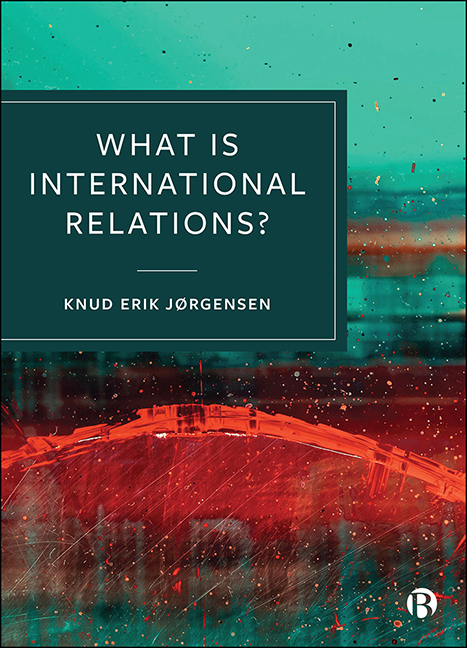Book contents
- Frontmatter
- Contents
- List of Figures, Tables and Box
- List of Abbreviations
- Preface
- Introduction
- 1 What is the Subject Matter?
- 2 What are the Human Sciences?
- 3 What is a Discipline?
- 4 What is Theory?
- 5 What is Disciplinary Diversity?
- 6 What is Community?
- 7 Globalizing International Relations?
- Conclusion
- Notes
- References
- Index
6 - What is Community?
Published online by Cambridge University Press: 13 May 2022
- Frontmatter
- Contents
- List of Figures, Tables and Box
- List of Abbreviations
- Preface
- Introduction
- 1 What is the Subject Matter?
- 2 What are the Human Sciences?
- 3 What is a Discipline?
- 4 What is Theory?
- 5 What is Disciplinary Diversity?
- 6 What is Community?
- 7 Globalizing International Relations?
- Conclusion
- Notes
- References
- Index
Summary
Introduction
Continuing to apply concepts that scholars frequently use in passing but that merit closer examination, this chapter focuses on community. However, the community in focus is not the international community or its rhetorical or other functions. Nor is it the imagined communities of nations or the communities on Scottish or Indonesian islands (Geertz, 1973; Cohen, 1989; Anderson, 1991). Instead, the chapter focuses on what William J. Goode (1957) refers to as a ‘community within a community: the professions’; and, given our special interest in IR, the focus is particularly on the oft-mentioned but hardly analysed, little understood and not always appreciated community of IR scholars.
Community studies are often based on the conceptual triptych of self, other and boundary, which also seems to work for the purposes of this chapter. Given that boundaries exist between self and other, they deserve special attention. Kicking an article off with a rhetorical question, ‘Should we leave behind the subfield of International Relations?’, Dan Reiter (2015) weighs the pros and cons and eventually concludes that the subfield should be kept (for now), mainly because dividing the bits and pieces into more viable and worthy disciplines and fields of study would create new boundary problems. Anthony P. Cohen (1998) also makes boundaries a key feature of communities and, like other sociologists and social anthropologists, he examines communities in terms of a relational notion of identity: who are we? what do we want to be recognized for? and who are we not? Rather than suggesting a morphological approach or providing an outside definition of community and then measuring the degree to which a given community matches the definition, Cohen asks what community appears to mean to its members, acknowledging that appearances are often deceptive. In the words of the editor of the series in which Cohen's book was published, the project is to explore if the members of a community ‘are able to infuse its culture with vitality, and to construct a symbolic community which provides meaning and identity’ (Hamilton, 1998: 9). Building and reproducing an IR community is thus a massive undertaking, and, in turn, analysing the degree to which it happened and is happening is a considerable task. The sections in this chapter aim at assessing the degree and ways in which the IR community has been capable of constructing such a symbolic community and of infusing its culture with vitality.
- Type
- Chapter
- Information
- What Is International Relations? , pp. 106 - 120Publisher: Bristol University PressPrint publication year: 2021

